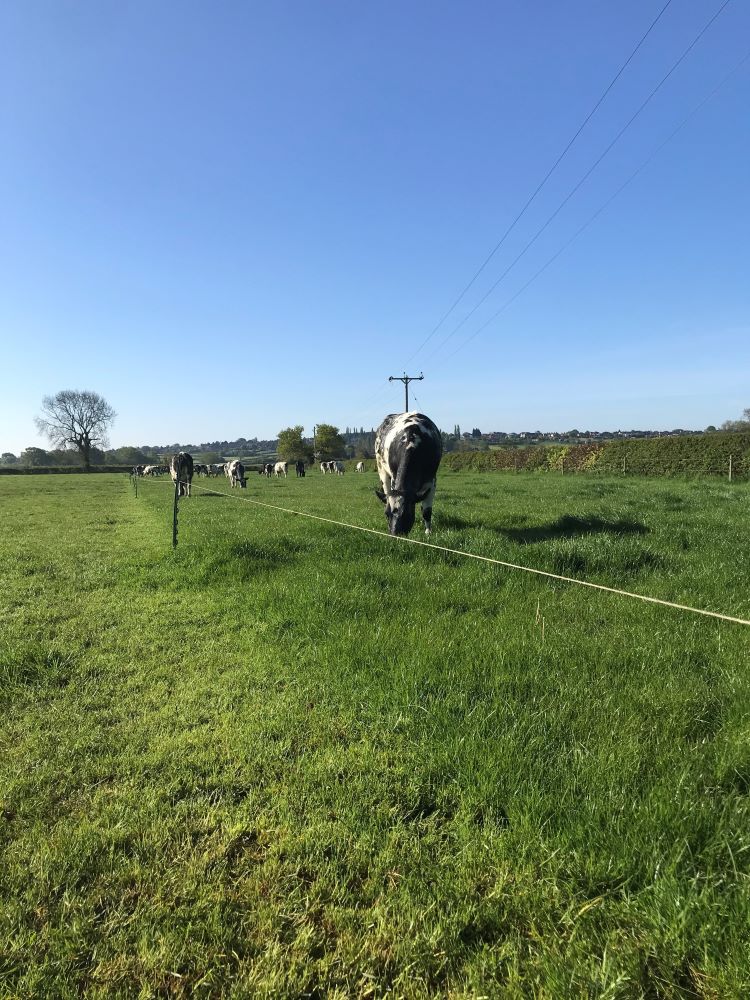Rearing heifers at grass
Friday, 23 July 2021
Using rotational grazing techniques on a heifer grazing platform not only helps train replacements for herd life, but also creates the quality leafy grass necessary for rumen development and daily liveweight gain.
Just as on the milking platform, however, it requires good infrastructure and an eye on residuals. Turning heifers out without measuring and monitoring won’t achieve cost savings, nor hit target growth rates, but it is a challenge in terms of grass budgeting, admits consultant Chris Coxon of Tiller Farm Consultancy. “To achieve growth on grass alone, you have to be strict about when you move and the quality you offer. Stocking rates are calculated as for cows: using heifer weights to determine demand and measuring available grass in a paddock,” he explains.
"You won’t get high intakes out of heavy covers of 2,700 kgDM/ha: it’s too daunting for heifers. Instead, graze at the two-leaf stage – around 2,400–2,500 kgDM/ha – because it gives acceptable quality and energy, without the bulk. And avoid waste, or poor regrowth due to slack grazing, by operating a leader-follower system with heifer groups."
Chris also says it is a good principle to move heifers every 2-3 days to prevent back grazing. "Setting up a platform that provides four days’ feed for yearlings followed by two days’ feed for older stock is the longest you can afford to stretch it though,” he warns. “Clear the residual with older heifers to get a 1,500 kgDM/ha before too much re-growth is damaged and lost."
A key difference between spring and autumn block herds is making sure that autumn-born heifers are robust enough before turnout. Although rotational grazing grows leafy, high energy grass all year round, calves need a good start on colostrum, followed by rumen development of at least six weeks’ milk feeding before a gradual weaning over 10 days to avoid any growth checks.
Chris points out that it takes three weeks of eating concentrate (or leafy grazed grass) to grow enough bacteria for the rumen to function and produce useful energy for growth. Introducing some concentrates from only a few days old is, therefore, important alongside milk feeding to ensure good development and weaning without any checks to growth rates.
"A strong calf adjusts to a change in environment, so autumn-born calves need to be kept growing well during winter to hit the ground running in spring after turnout. Minimising any growth check during the turnout period is important: strong calves fed some concentrate during this transition to grass will always cope better. Rumen development is stimulated by butyrate and propionate production from starchy feeds. For a spring-born calf, young, leafy spring grass is nature’s equivalent to a concentrate."
As with milking cows, it’s vital to supply fresh clean water at grazing, but using appropriate-sized troughs with good access and hard standing to avoid poaching. If heifer paddocks are also used for cow grazing, a change in trough type is likely.
Whatever season of birth, in a heifer’s first year Chris advises that it’s important to consider extra feed such as concentrates, hay or silage if grass quality falls, or it turns cold and wet (thus increasing maintenance requirements). Also offer some form of housing or shelter to prevent a fall in target growth rates.
With major cost savings to be had, from straw to starter concentrate, bedding and labour, rearing calves at grass has to be carefully planned and budgeted to benefit. Grazing managers looking for their next challenge, therefore, might find it lies with setting up an efficient and effective heifer grazing platform.
An AHDB Dairy funded project looking at how to make the most of rearing heifers at grass will be finishing this summer, keep an eye out in Forage for Knowledge for updates on the key findings.
 James Herrick
James Herrick
Sectors:

